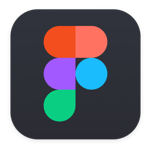We have long seen the signs, but now that so many companies have gone remote this year, it’s clear that distributed teams are the future. But while the benefits of remote work are robust, many teams have seen a decline in innovative collaboration since they moved to WFH. Outside of the office, it’s easy to let the best parts of a great brainstorming session—the whiteboard, the sticky notes, the back-and-forth spitballing of ideas—fall by the wayside. A disorganized Slack thread or blind survey responses won’t help you solve your most pressing problems. So what do you do? It’s time to go back to the (digital) drawing board.
Here are the top three best tools for innovative ideation on the market.
Unlock new insights with Balloon
Collaboration is necessary in many cases, but traditional brainstorm sessions also bring harmful group dynamics, like groupthink, loud voices, and fear, to the table. In order to unlock the best ideas from your whole team, Balloon uses a staged collaboration process called a flight to remove group dynamics while saving you 70% of your meeting time.
In Stage 1 of a flight, team members anonymously (and asynchronously, if necessary) voice ideas and feedback in response to questions posed by the team leader before up-voting ideas they support from the group during Stage 2. After the flight ends, each response gets an approval rating, quantifying alignment and making it easy for leaders to decide on next steps that everyone approves of. Balloon’s anonymous, staged flow also allows ideas to arise from anywhere, anyone in the company, which creates a culture of psychological safety that’s proven to drive productivity.
Pro tip: Time constraints are proven to boost creativity, so incorporate those boundaries into Stage 1 of your flight. For a live—or synchronous—flight, schedule Stage 1 to last for an hour at most. (In many cases, 30 minutes is perfect.) For an asynchronous flight, directly advise your team to only spend 15 to 20 minutes contributing ideas.
Add a visual edge with Miro
 Now that most teams are working remotely, the physical essentials of a collaboration session must be recreated online, and Miro is one of the best tools out there for digital whiteboarding. Miro has a polished interface and multiple ideation template options, and it allows real-time collaboration on an infinite canvas in real-time in whatever format works for your team.
Now that most teams are working remotely, the physical essentials of a collaboration session must be recreated online, and Miro is one of the best tools out there for digital whiteboarding. Miro has a polished interface and multiple ideation template options, and it allows real-time collaboration on an infinite canvas in real-time in whatever format works for your team.
Pro tip: Before beginning a project, choose from one of Miro’s many templates for visual organization: Mind map, Kanban, roadmap calendar, user story map, and more. Which style worked best for your team in person? There are more than 120 templates to choose from, so find a similar style and get to work.
Design and collaborate with Figma
 When work is siloed before being passed from one department to another, so many details can get lost in the process. This is particularly prevalent between Content, Engineering, and Design teams, but Figma allows you to work in the same project, on the same platform, while still keeping everything organized and referenceable. No more repeating multi-step processes just to fix a typo in product or exporting hundreds of storage-stealing drafts; Figma uploads everything to the cloud, so tracking and sharing changes is quick and smooth.
When work is siloed before being passed from one department to another, so many details can get lost in the process. This is particularly prevalent between Content, Engineering, and Design teams, but Figma allows you to work in the same project, on the same platform, while still keeping everything organized and referenceable. No more repeating multi-step processes just to fix a typo in product or exporting hundreds of storage-stealing drafts; Figma uploads everything to the cloud, so tracking and sharing changes is quick and smooth.
Pro tip: Need inspiration or tips on Figma best practices? Try the Figma Community, an open-source resource pool of files from real Figma users. Big companies like Google and Microsoft have uploaded entire systems for anyone to inspect, or you can check out particular files from smaller companies and even individual illustrators.
